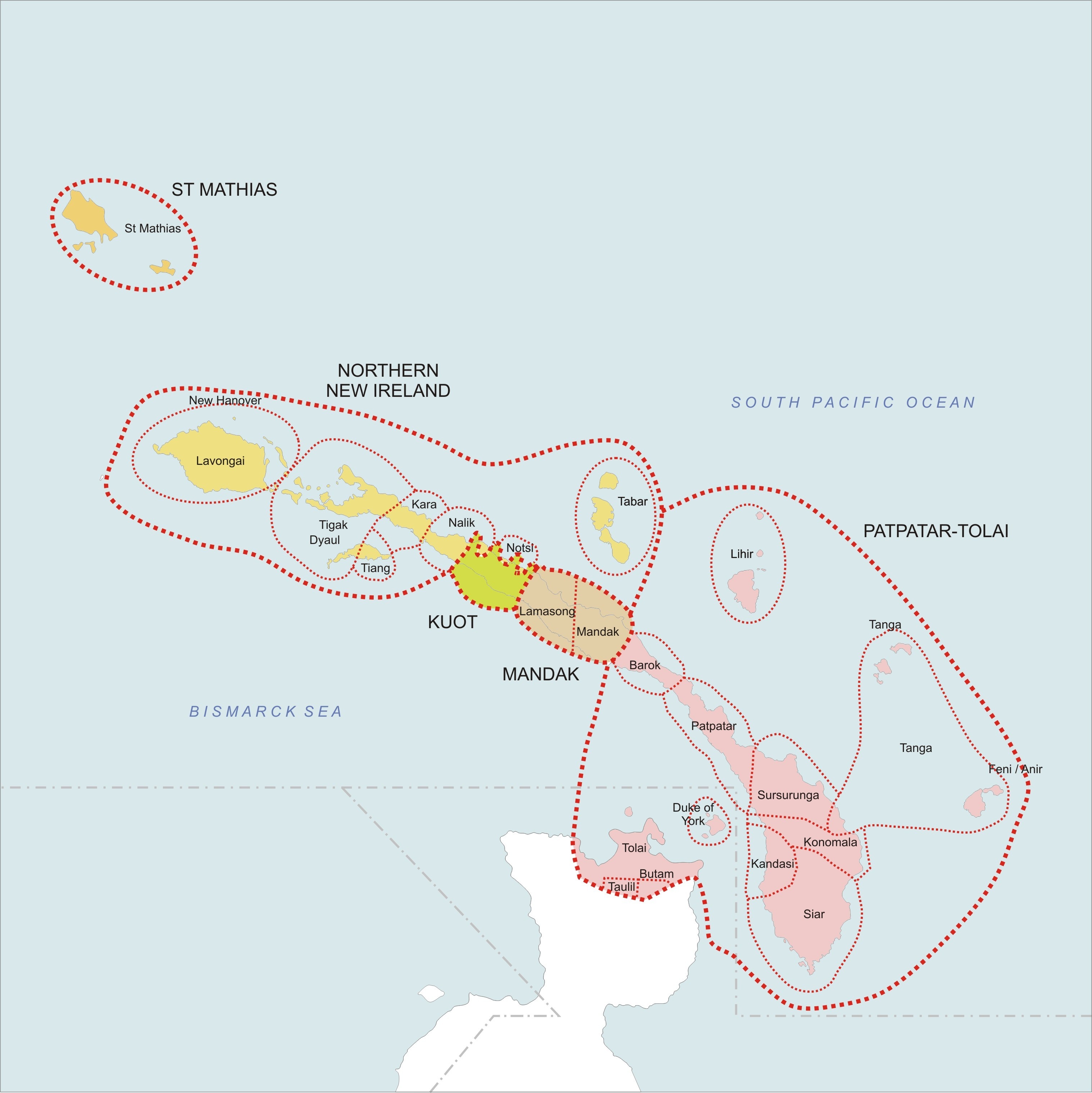|
Dyaul Island
Dyaul Island (also Djaul) is an island in New Ireland Province, Papua New Guinea. Its area is 100 km2. The inhabitants live mainly in seven villages, and frequently visit Kavieng, the capital of the province, for supplies or to sell produce and fish. There are two languages, not counting Tok Pisin, spoken on Dyaul; Tigak and Tiang language, Tiang. Tigak is widely spoken on the western end of the island in two villages. Tiang is spoken across the remainder of the island. References Islands of Papua New Guinea New Ireland Province {{PapuaNewGuinea-island-stub ... [...More Info...] [...Related Items...] OR: [Wikipedia] [Google] [Baidu] |
New Ireland Province
New Ireland Province, formerly New Mecklenburg (german: Neu-Mecklenburg), and Nova Hibernia, is the northeasternmost province of Papua New Guinea. Physical geography The largest island of the province is New Ireland. Also part of the province are numerous smaller islands, including Saint Matthias Group ( Mussau, Emirau), New Hanover, Djaul, Tabar Group ( Tabar, Tatau, Simberi), Lihir, Tanga Group (Malendok, Boang), Feni Islands ( Ambitle, Babase) and Anir. The land area of the province is around 9 560 km². The sea area within the Exclusive Economic Zone (EEZ) of New Ireland Province is around 230,000 km². Ecology In the early days of the French Revolution while searching for a lost scientific expedition the vessel La Recherche passed by New Ireland. On board was the prominent botanist Jacques-Julien Houtou de Labillardière who noted in his journal fine stands of teak (tectona grandis) trees growing at the southern end of the island. This marks the eas ... [...More Info...] [...Related Items...] OR: [Wikipedia] [Google] [Baidu] |
Papua New Guinea
Papua New Guinea (abbreviated PNG; , ; tpi, Papua Niugini; ho, Papua Niu Gini), officially the Independent State of Papua New Guinea ( tpi, Independen Stet bilong Papua Niugini; ho, Independen Stet bilong Papua Niu Gini), is a country in Oceania that comprises the eastern half of the island of New Guinea and its offshore islands in Melanesia (a region of the southwestern Pacific Ocean north of Australia). Its capital, located along its southeastern coast, is Port Moresby. The country is the world's third largest island country, with an area of . At the national level, after being ruled by three external powers since 1884, including nearly 60 years of Australian administration starting during World War I, Papua New Guinea established its sovereignty in 1975. It became an independent Commonwealth realm in 1975 with Elizabeth II as its queen. It also became a member of the Commonwealth of Nations in its own right. There are 839 known languages of Papua New Guinea ... [...More Info...] [...Related Items...] OR: [Wikipedia] [Google] [Baidu] |
Tiang Language
The Tiang language also known as Djaul is a language spoken in Papua New Guinea.Tiang Ethnologue, 2012, access date 05-01-2012 Overview It is spoken on and in 1972 there were 790 speakers reported by Beaumont. On that island Tigak and are also spoken. Tigak is predominant on the northern half of the island and Tiang on the southern half. The former may be related closely to Tiang. It is also spoken on some other nearby areas in |
Islands Of Papua New Guinea
An island (or isle) is an isolated piece of habitat that is surrounded by a dramatically different habitat, such as water. Very small islands such as emergent land features on atolls can be called islets, skerries, cays or keys. An island in a river or a lake island may be called an eyot or ait, and a small island off the coast may be called a holm. Sedimentary islands in the Ganges delta are called chars. A grouping of geographically or geologically related islands, such as the Philippines, is referred to as an archipelago. There are two main types of islands in the sea: continental and oceanic. There are also artificial islands, which are man-made. Etymology The word ''island'' derives from Middle English ''iland'', from Old English ''igland'' (from ''ig'' or ''ieg'', similarly meaning 'island' when used independently, and -land carrying its contemporary meaning; cf. Dutch ''eiland'' ("island"), German ''Eiland'' ("small island")). However, the spelling of the w ... [...More Info...] [...Related Items...] OR: [Wikipedia] [Google] [Baidu] |

